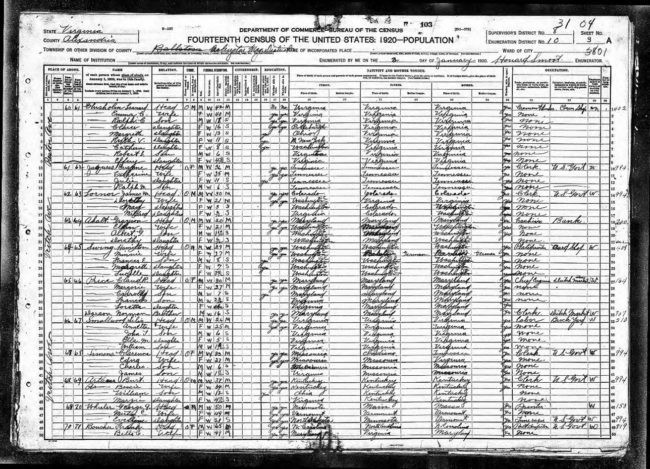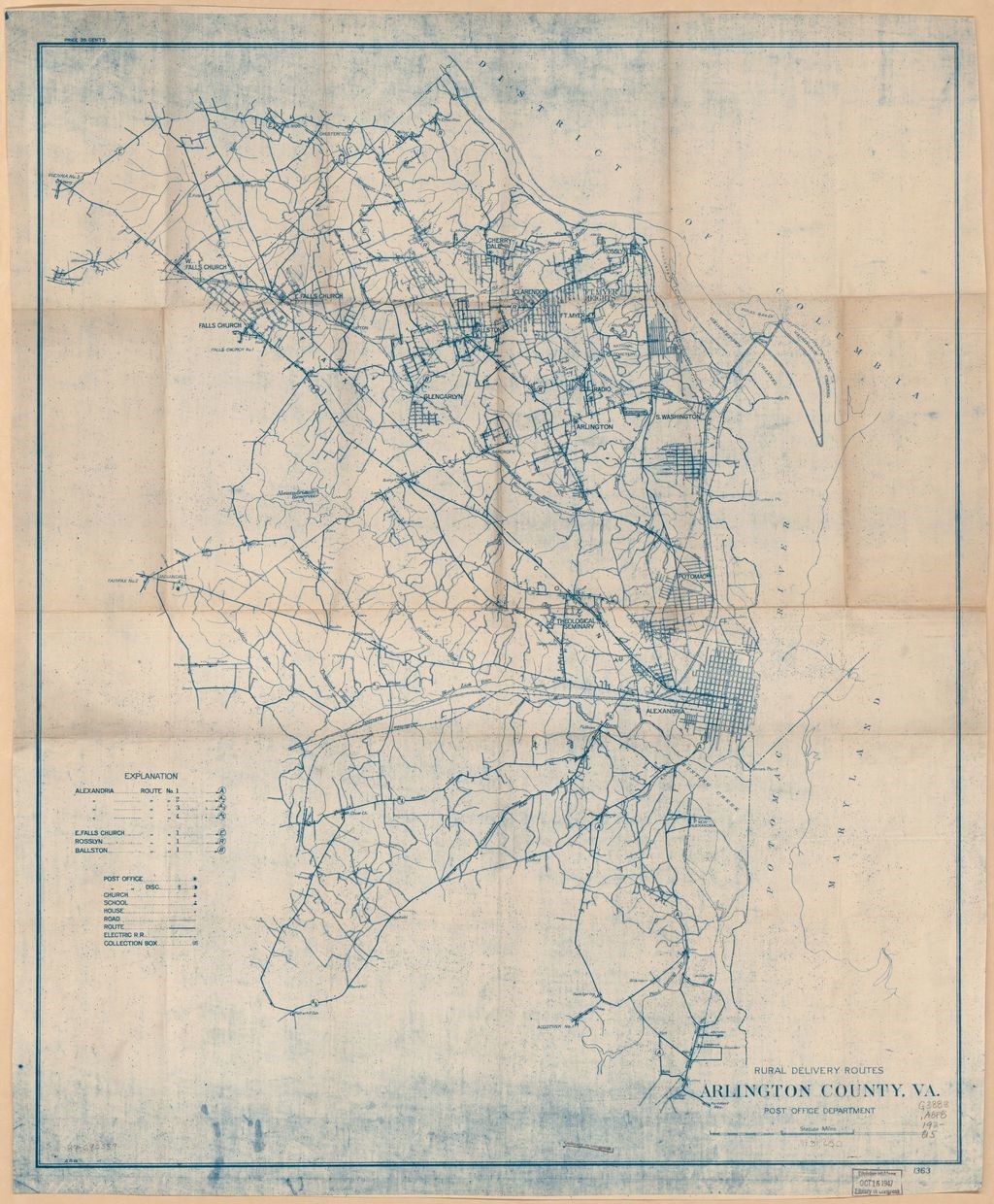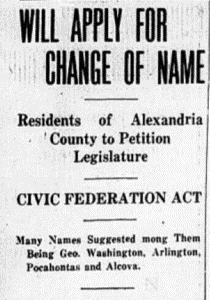It has been 100 years since Arlington took on its name – changing from “Alexandria County” to the more distinct “Arlington” to avoid confusion with the nearby city of Alexandria. But how else has Arlington changed since then?
Sheet 3A from the Arlington Magisterial District, covering Veitch Avenue and Reston Avenue. Image courtesy of the National Archives.
New County resources show the vast changes Arlington has experienced over the last century, as it shifted from a mostly rural cluster of farms and a few small businesses to the bustling urban region we know today. Using data from the 1920 Census (made available through the Census Bureau’s “72-year rule,” which allows Census data to go into historical record after 72 years), along with local archival material, a rich picture of Arlington’s past has been revealed.
Read about how the 1920 Census project came to be from County Manager Mark Schwartz.
The project’s StoryMap shows an interactive view of the County’s history, highlighting the five enumeration districts within then-Alexandria County that are part of present-day Arlington. The Map looks at the notable people and places within each district that made up the vibrant communities of their day.
After scrolling through the various neighborhoods and citizens of 1920 Arlington, you can also view directly how present-day Arlington looks compared to 1920 – seeing how your home, school, or favorite spots around the County looked 100 years ago.
The Arlington Central Library (and Quincy Park) today, along with what the rest of the area looked like in 1920. Image taken from the 1920 Census StoryMap.
Watch: A Peek at the Census – Celebrating Arlington Then and Now (1920-2020)
View: Slideshow presentation from A Peek at the Census
Among these County resources also include the direct data from the 1920 Census. This data was taken from both the Census itself and augmented with information from death certificates, enlistments forms for World War I draftees, and the 1910 and 1930 censuses. These supplemental sources helped to fill in gaps where data from the 1920 Census was obscured, illegible, or missing.
With these additional materials, the 1920 Census tells us who was living in Arlington, where they lived, where they worked, and other important details that show what life was like at this point in time.
- 1920 – Arlington Census Record Data on the Open Data Portal
- 1920 – Arlington Census Record Data
- 1920 – Arlington Detailed Datasheet
- 1920 – Arlington Census Surname Ranking
- 2020 – Arlington Detailed Datasheet
- 1920-2020 Arlington Data Comparison
Taken all together, these resources show a vastly different Arlington, from its very population (going from 16,040 in 1920 to an estimated 228,400 in 2020), its demographic makeup, and even the street names that Arlingtonians traversed. Dive into these newly released resources to learn more about just how much the County has changed in the last 100 years.
A 1920 map of Arlington County rural delivery routes gestures to the largely rural composition of the County 100 years ago. Image courtesy of the Library of Congress.
Headline from the Alexandria Gazette from September 25, 1919, signaling the County’s move to change its name. Image courtesy of the Alexandria Gazette.
Interested in learning more?
- You can find national census records from 1790-1940 online through the National Archives.
- Additional Arlington-related enumeration data going back to 1782 is available through the Center for Local History.
- Do you have a question, feedback, or contributions to the 1920 Census Project? Email census1920@arlingtonva.us
Don’t forget: there’s still time to take the 2020 Census! Complete your form online at my2020census.gov
To learn more about Arlington's history, visit the Center for Local History on the first floor of the Central Library.
Do you have a question about this story, or a personal experience to share?
Use this form to send a message to the Center for Local History.
Center For Local History - Blog Post Message Form
Do you have a question about this story, or a personal experience to share? Use this form to send a message to the Center for Local History.
"*" indicates required fields



